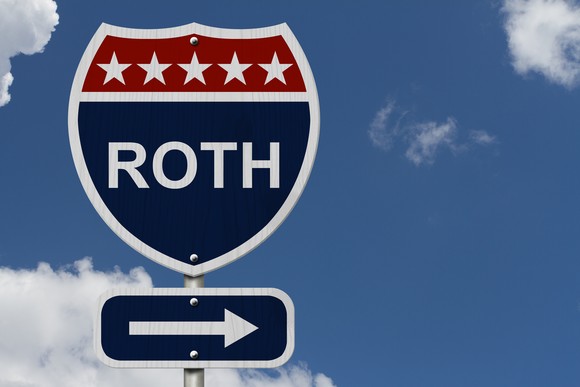401(k) plans have a lot going for them. Between automatic contributions direct from your paycheck, relatively high limits, tax advantages, and the possibility of an employer match, they can be an awesome tool for your retirement nest egg. Indeed, I'd go so far as to say that investing enough in your 401(k) to maximize your match should be the very first investment you make.
Still, once you get beyond that match, there's a no-brainer retirement account I'd choose to max out way before going back to contribute more to a 401(k). That account is a Roth IRA. A Roth IRA has so many advantages over a typical 401(k) plan that it's nearly always worth it to figure out how to get money into one as a very high priority for your retirement focused investments. Here are five key reasons why.

Image source: Getty Images
No. 1: Awesome investment flexibility
Most 401(k) plans offer investors a limited set of curated funds to choose from. Within a Roth IRA at a typical brokerage account, you have access to virtually all of the investments available at that brokerage. As long as you avoid a few modest pitfalls like margin, self-dealing, or investing in collectables, the brokerage's entire collection of potential investments are available to you.
That flexibility can be helpful if you'd like to invest in ways your 401(k) won't allow. For instance, if you'd like to pursue an aggressive growth strategy, but your 401(k) only offers broad-spectrum and target-date index funds, your Roth IRA can be a great place to pursue that alternative.
No. 2: Plenty of no-fee options available
Typical 401(k) plans charge their participants maintenance fees, on top of whatever fees the investment options in the plan themselves charge. In a Roth IRA, you can often find brokers that offer no fees and that offer commission-free trading. As a result, aside from any management fees on investment funds you choose to own in your Roth IRA, you can keep your overhead costs around $0.
No. 3: Easy access to the money you invest
You can either directly contribute money to a Roth IRA or you can get money into one via a backdoor approach by converting money originally contributed to a different retirement plan. You can pull money out of the plan that you directly contributed at any time for any reason, with no taxes or penalties. Money you contribute to a Roth via a backdoor approach can also be withdrawn without taxes or penalties, but it generally needs to 'season' in your account for at least five years, first.
Note that those tax- and penalty-free withdrawals apply only to your contributions. For the earnings to come out tax- and penalty-free, you generally need to be at least age 59 and a half and have had money in your Roth IRA for at least five years.
No. 4: Tax- and headache-free access to your money in retirement
Once you do reach age 59 and a half, all the money inside your Roth IRA is available to you tax- and penalty-free, as long as you've had the account funded for at least five years. That can be a tremendous tool for helping you manage your income in retirement.
Retirees with Traditional-style retirement plans face Required Minimum Distributions (RMDs) from those plans. Those RMDs are based on your age and account balance, not based on how much money you need to cover your costs. RMDs can trigger things like forcing more of your Social Security benefit to be taxable and requiring you to pay higher Medicare Part B and D premiums.
Both by not being subject to RMDs for the original account owner and by keeping your qualified withdrawals out of your adjusted gross income, Roth IRAs are great tools for savvy retirees.
No. 5: Great estate-planning benefits
Roth IRAs are also great tools for passing on money to the next generation. Although your kids will need to withdraw money you leave them in a Roth IRA within 10 years, those withdrawals will be tax-free to them. Contrast that with money inside a Traditional-style retirement plan, which will get taxed when those withdrawals are made, and the Roth IRA is a clear winner.
Get started now
If you're eligible to contribute to a Roth IRA, for 2024, contributions are currently limited to $7,000 per year if you're under age 50 or $8,000 per year if you're at least age 50. That relatively modest limit, along with those five-year timers mentioned earlier, make it important to get started funding your Roth IRA as early as you can. Make today the day you figure out how to put a Roth IRA to use for you, and start taking advantage of this no-brainer of a retirement account.